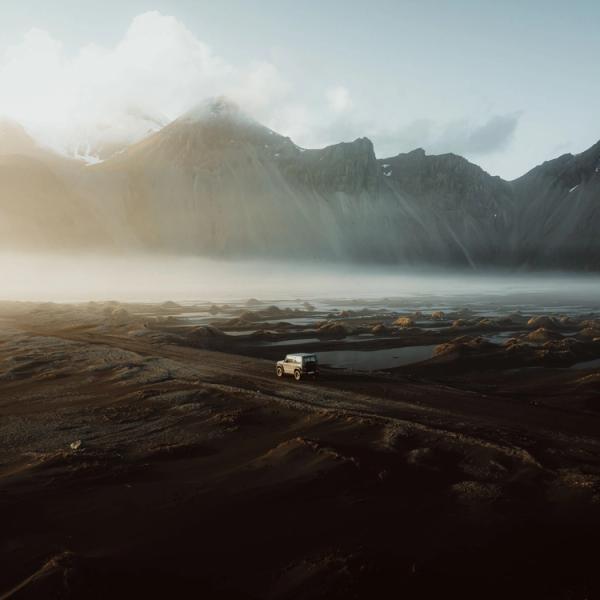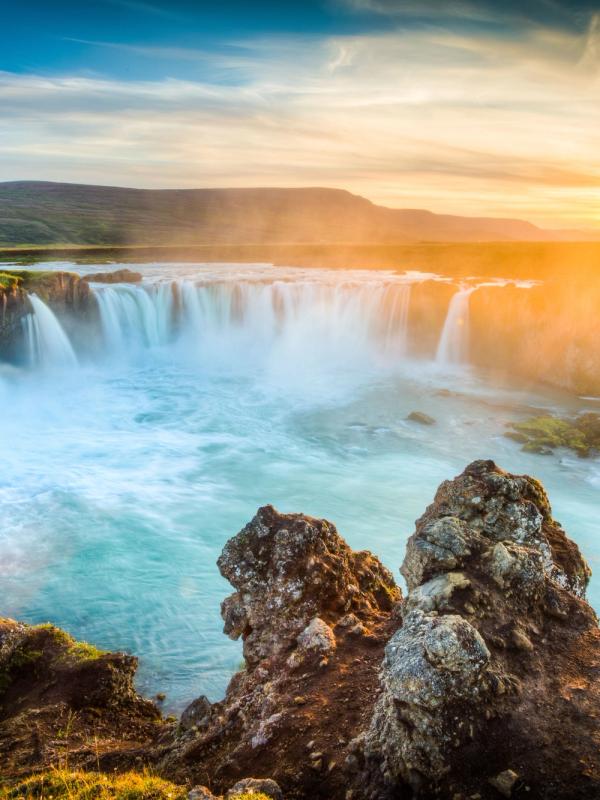
Goðafoss: The Waterfall of The Gods
Welcome to the land of fire and ice—where dramatic natural wonders seem to pop up at every turn! Northern Iceland is full of jaw-dropping sights, and one of the most magical is Goðafoss Waterfall. This waterfall is a great place to enjoy the scenery, learn a bit of history, or just take a break and appreciate the view. It’s an absolute must-visit.
What’s Goðafoss & Why Is It Worth a Visit?
Goðafoss is one of Iceland’s most amazing waterfalls. It’s 12 meters (39 feet) tall and 30 meters (98 feet) wide, with the Skjálfandafljót River flowing over it in a curved, horseshoe shape. The waterfall shape and its turquoise waters make it a great spot for photos, with lots of different angles to check out.
The waterfall is in a lava field formed 7,000 years ago during an eruption from the Trölladyngja volcano. The dark basalt rocks around the falls make the white water stand out even more. In the summer, green hills surround it, and in the winter, snow and ice give it a totally different look.
There’s also a well-known story connected to Goðafoss. Around 1000 AD, Iceland decided to adopt Christianity. According to legend, a local leader named Þorgeir Ljósvetningagoði threw statues of the old Norse gods into the waterfall to mark the change. Whether the story is true or not, many people think about it when they visit.
Goðafoss is also really easy to get to. It’s just a 45-minute drive from Akureyri on the Ring Road, and the roads are smooth and simple to drive. It’s part of the Diamond Circle, a popular route in northern Iceland that’s packed with great stops.
A final fact that might convince you (up or against) is that, according to government data, Goðafoss (specifically its eastern side) was the 6th most visited place in the whole country in 2024, with 288,430 visitors.
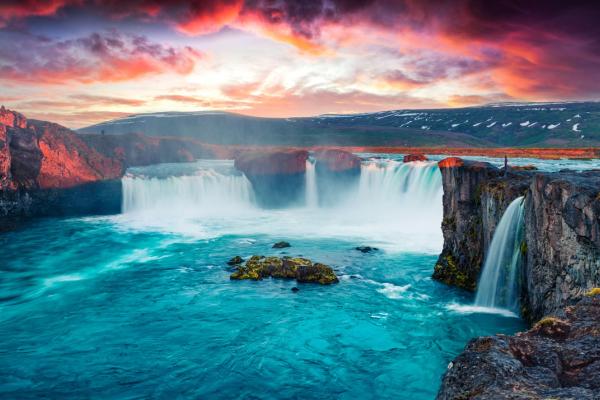
Facts & Features About Goðafoss
Goðafoss is known for its curved horseshoe shape that splits the river into several streams as it flows over the edge. The dark rocks around the waterfall show how Iceland’s volcanic landscape has shaped the area, making the view even more eye-catching.
Here are some key facts about Goðafoss:
- Name: “Goðafoss” means “Waterfall of the Gods.”
- Height & Width: The waterfall is about 12 meters (39 feet) tall and 30 meters (98 feet) wide.
- River Source: The water comes from the Skjálfandafljót River, which starts at the Vatnajökull glacier.
- Geology: Goðafoss is part of a lava field that formed 7,000 years ago. The black basalt rocks make the white water stand out.
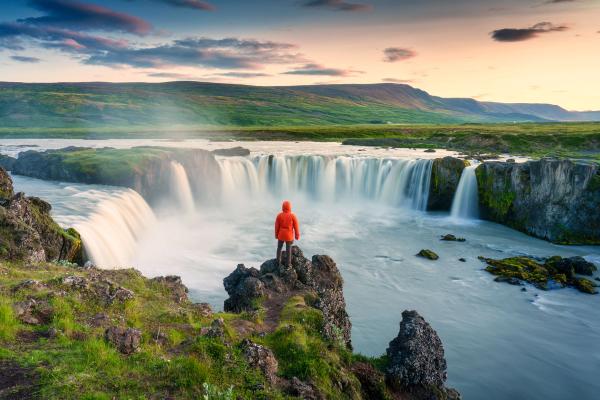
Where’s Goðafoss and How to Get There
Goðafoss is in northern Iceland, right next to the Ring Road (Route 1). It’s about a 45-minute drive east of Akureyri or roughly five hours from Reykjavik (around 420 km or 260 miles). One of the best things about visiting is that you don’t need to deal with rough mountain roads or F-roads, so it’s easy to reach almost any time of year.
Here are your options for getting there:
- Rental Car: This is the easiest way to visit since it lets you explore at your own pace.
- Public Bus: You can take a bus to northern Iceland, but no buses go directly to Goðafoss. To see the falls, you’ll need to rent a car or join a guided tour once you’re in the area.
- Guided Tours: Many tours include Goðafoss and nearby spots like Dettifoss or Húsavík, making them a stress-free option.
Viewing Areas
You can check out Goðafoss from both sides of the river. A pedestrian bridge near the Ring Road connects the two, and each side offers something a little different:
- West Side (Akureyri Side): This side has a main viewing platform that’s just a short walk from the parking lot. From here, you’ll get wide, open views of the waterfall’s horseshoe shape, and you’ll feel the power of the water up close.
- East Side (Lake Mývatn Side): On this side, you can find upper platforms with views from higher ground. There’s also a short path down to a pebble beach that I really recommend, where you can stand close to the falls and see the basalt rocks up close. The waterfall is actually farther, but the feel is much more intimate and unique. If you’re visiting in winter, be careful of icy trails and wear sturdy shoes with good grip.
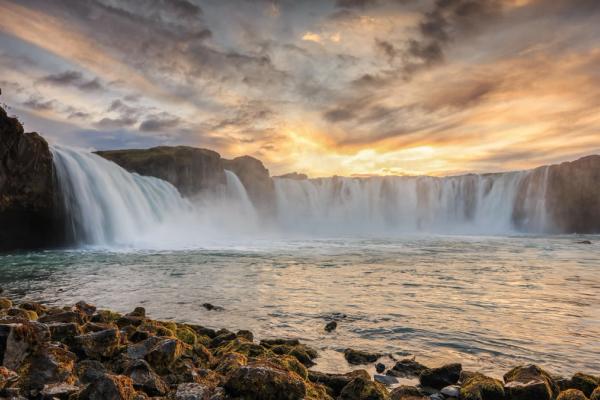
Best Time to Visit Goðafoss
Goðafoss is worth visiting any time of year, but each season offers something a little different.
- Summer (June–August): The weather is mild, the hills around the falls are green, and you’ll get plenty of daylight, thanks to Iceland’s long summer days.
- Winter (November–March): The falls turn into a snowy, icy wonderland, and if the skies are clear, you might even catch the Northern Lights above them.
- Spring or Fall (April–May or September–October): These are great times to visit if you want fewer people around. Just be aware that the weather can change quickly, so keep an eye on the forecast.
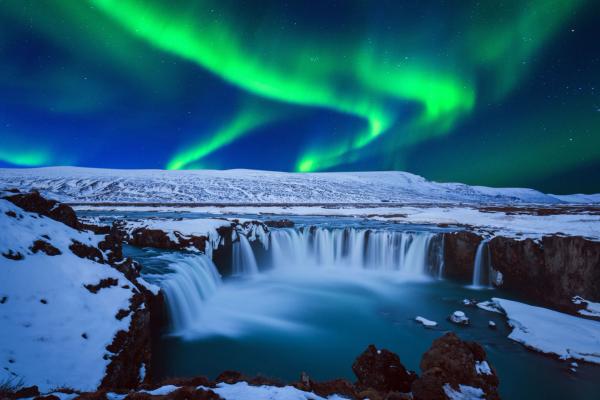
What to Wear When Visiting Goðafoss
Iceland’s weather can change fast, so it’s important to wear layers to stay comfortable. Here’s what you’ll need:
- Base Layer: Thermal clothing to keep you warm and dry.
- Middle Layer: A fleece or sweater for extra warmth.
- Outer Layer: A waterproof jacket to protect against rain and mist.
- Footwear: Sturdy hiking boots or waterproof shoes with good grip for wet or icy trails.
- Winter Accessories (if visiting in colder months): Warm hat, gloves, and thermal socks.
- Summer Extras: Sunglasses to block the glare from the water or snow.
Surrounding Sites & Things to Do There
You can spend as little as 30 minutes at Goðafoss for a quick visit or take two to three hours to walk around, take photos, and enjoy the area. There are several trails and paths that give you different views of the waterfall. It’s a perfect spot for photos, and there’s even a café nearby if you want a snack or drink.
Goðafoss is also a key stop on the Diamond Circle, a scenic route in northern Iceland with some of the most incredible natural attractions. Here are four other places along the route you shouldn’t miss:
Lake Mývatn
Lake Mývatn is a volcanic area with lots to see, like lava fields and steaming hot spots. Its name means "Midge Lake" because of the tiny flies that show up in summer. These flies attract plenty of birds, making it a great place for birdwatching. While you’re there, check out the Skútustaðagígar pseudocraters and Dimmuborgir, a lava field with strange, rocky formations that show the area’s volcanic history. If you want to relax after a day of exploration, head to the Mývatn Nature Baths.
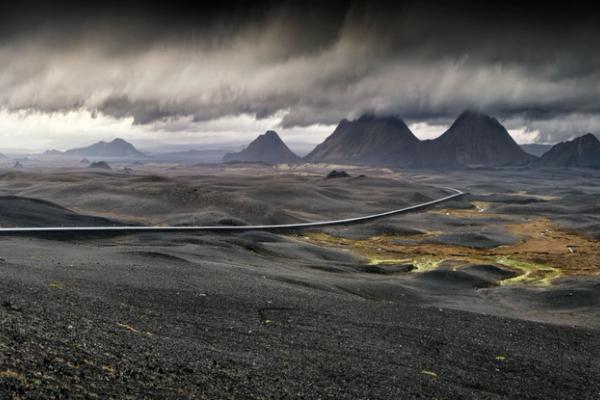
Dettifoss Waterfall
Dettifoss is Europe's second most powerful waterfall. You’ll often feel the ground shake from the sheer force of the water before you even see it. The waterfall drops into the Jökulsárgljúfur canyon, and on sunny days, you might see rainbows in the mist. The area around the falls is wild and rugged, shaped by ancient glacial floods, and it’s a must-see for anyone who loves nature at its strongest.
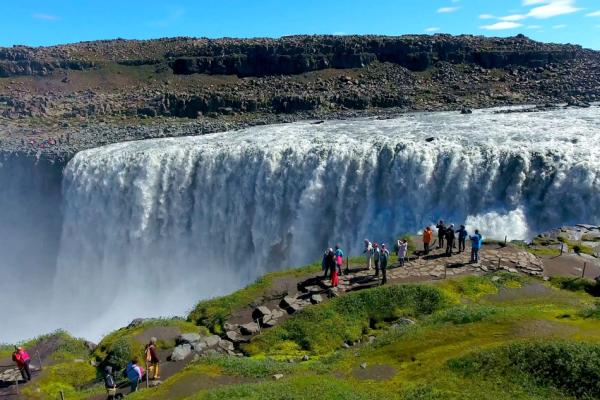
Ásbyrgi Canyon
Ásbyrgi Canyon looks like a giant horseshoe, and Icelandic legends say it was created by the hoofprint of Óðinn’s eight-legged horse. The canyon is about 3.5 kilometers long and over 1 kilometer wide, with tall cliffs and a peaceful forest in the center. If you like hiking, there are trails through the forest and up to viewpoints where you can see the whole canyon floor.

Húsavík
Húsavík is a small fishing town that’s famous for whale watching. Skjálfandi Bay, right next to the town, is one of the best places in Iceland to see humpback whales, minke whales, and sometimes even blue whales. While in Húsavík, you can explore the harbor, visit museums, and enjoy the colorful houses. If you want to relax, check out the Húsavík Geothermal Sea Baths, where you can soak in warm water with amazing views of the bay.
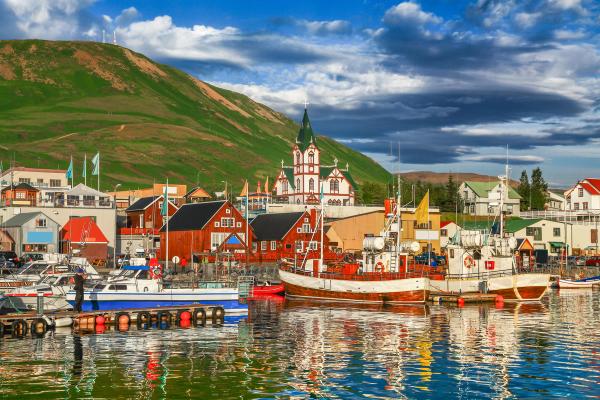
Conclusion
Goðafoss Waterfall is famous for the story about Norse god idols being thrown into its waters, but it’s the stunning scenery that leaves the biggest impression. Its spot along the Ring Road makes it easy to visit, and its beauty shines in every season. Whether you’re traveling the Diamond Circle or just passing by, Goðafoss is a place that will stay with you long after your trip. It’s easy to see why it’s called the “Waterfall of the Gods.”

